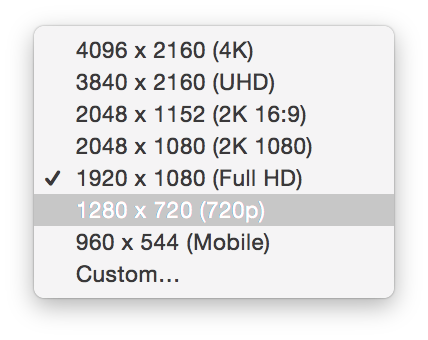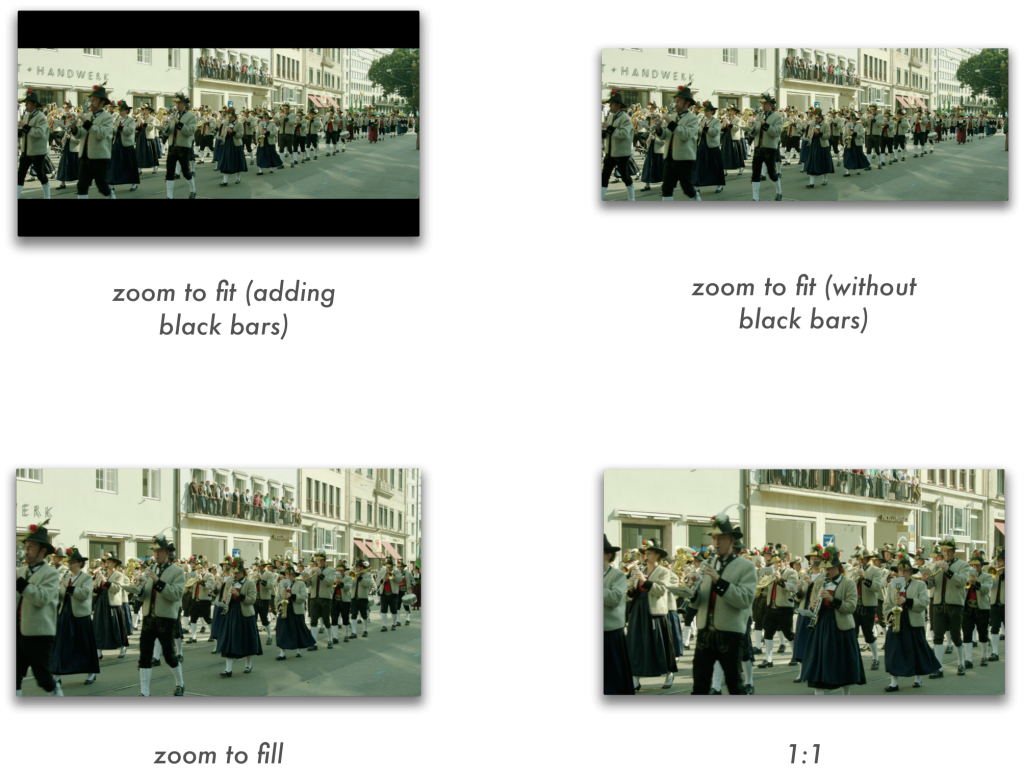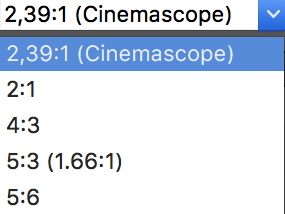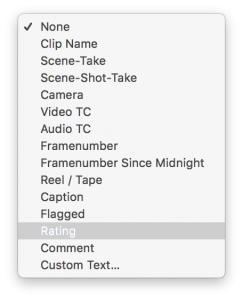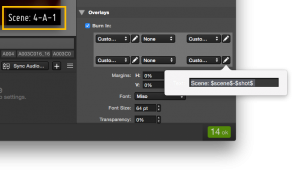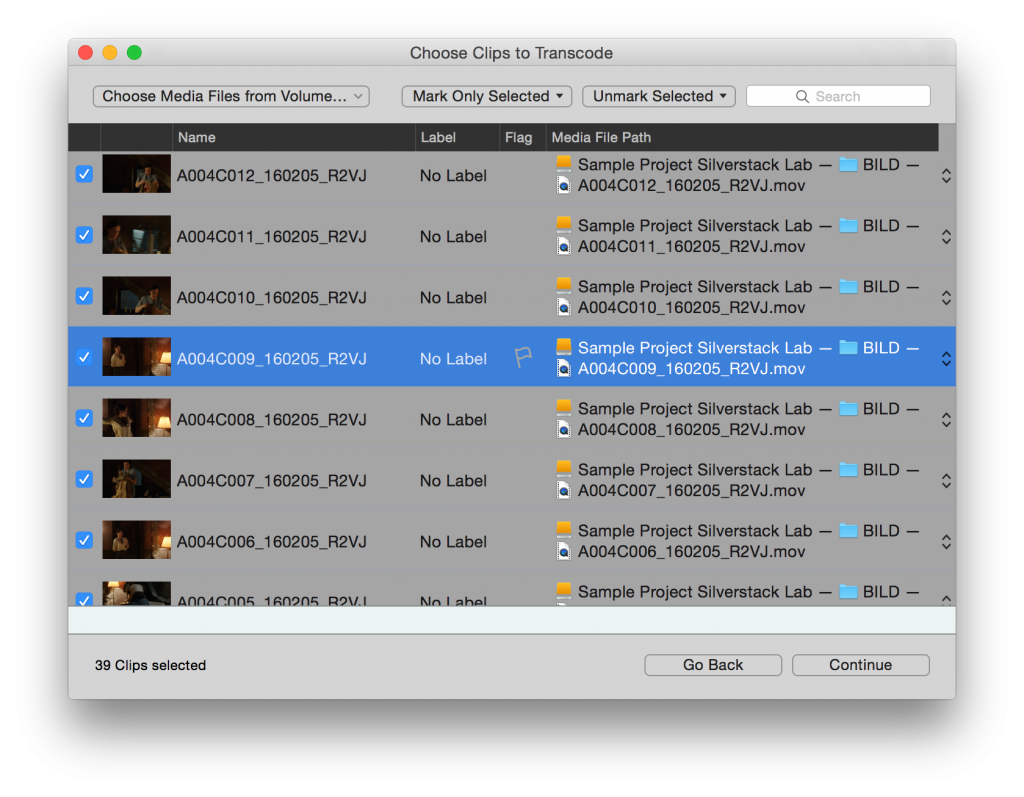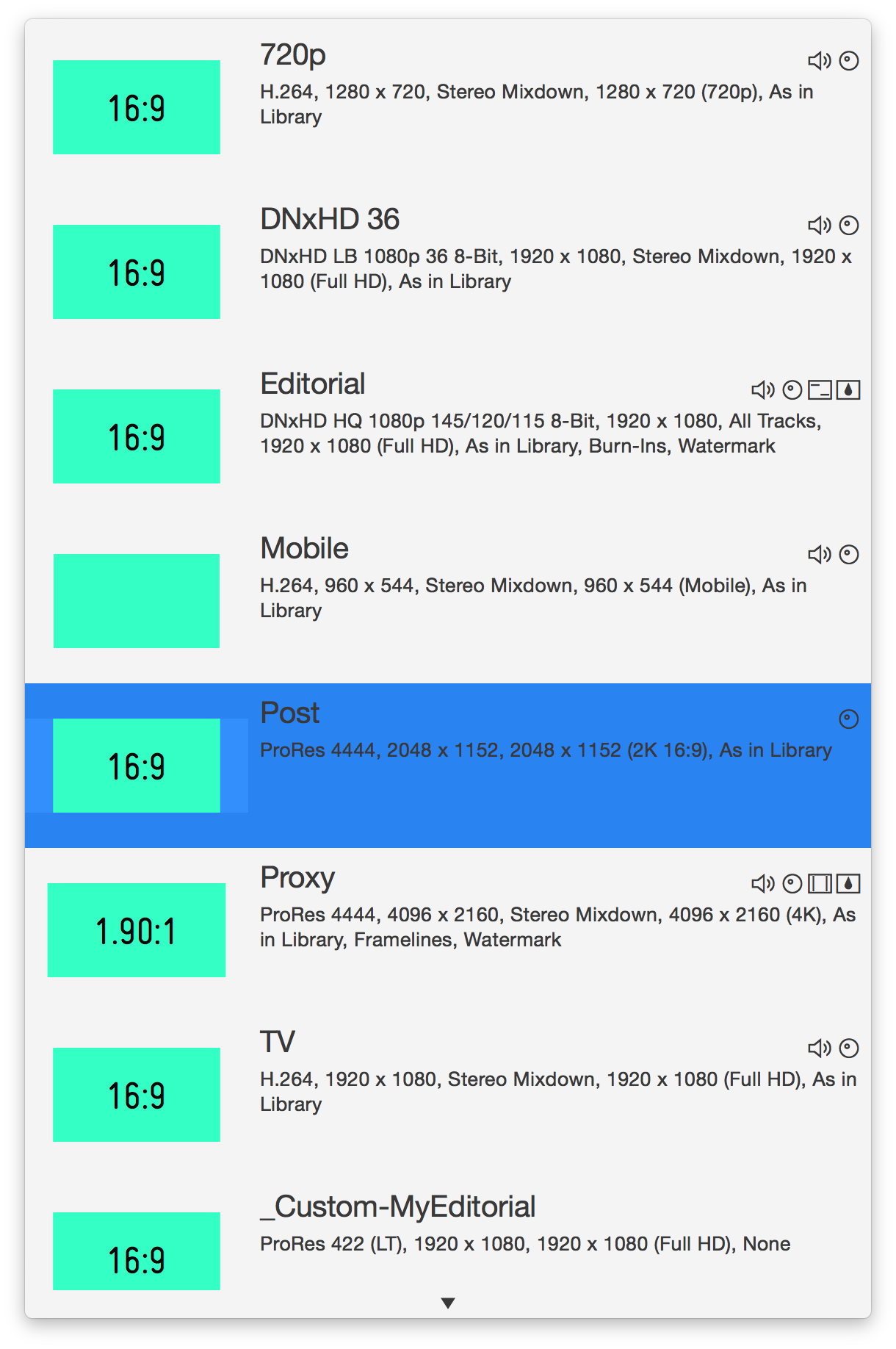This article covers features which are only available in Silverstack Lab.
Individual Clip vs Combined Clips Transcoding
Silverstack Lab offers two different basic transcoding options:
- Individual Clips (one file per clip): The Individual Clips “standard” transcoding option creates one transcoded clip per source clip.
- Combined Clip (single file with multiple clips): The Combined Clip transcoding option is able to create one transcoded clip for multiple source clips.
The Combined Clip transcoding option has restrictions compared to the “standard” Individual Clips option. Please refer to the article Combined Clip Transcoding in Silverstack Lab to learn more about this special transcoding option.
Continue with this article below to learn more about the standard case of transcoding to individual clips.
Transcoding Configuration vs Starting a Transcoding Job
Silverstack Lab separates the configuration of the transcoding settings from the actual starting of a transcoding job:
- The section “Transcoding Configurations” will explain how to adjust the settings for your transcoding job.
- The section “Starting a Transcoding Job” will explain how to execute a transcoding job.
Transcoding Configurations
The transcoding settings can be found in the transcoding tab of the right bar. Click the transcoding icon ![]() to access the transcoding tab:
to access the transcoding tab:

Configure the transcoding settings in the transcoding tab of the right sidebar
The upper part of the transcoding tab shows the custom transcoding configurations. The lower part shows the detailed settings for the selected configuration. The settings will be applied and stored to the configurations immediately.
Locking Transcoding Configurations

Locking transcoding configurations
Transcoding configurations can be locked to avoid changes to them by clicking the lock icon on the right side of the “Settings” header bar. Locked configurations will be shown with a white lock icon in the table*.
Transcoding Settings
Audio & Video
Video
- Codec: Select the output codec depending on your requirements. There are different options available (also shown in Fig. 3):
- H.264
- H.265 / HEVC (available starting from macOS 10.13)
- ProRes 4444
- ProRes 422
- ProRes 422 (HQ)
- ProRes 422 (Proxy)
- DNxHD LB 1080p 36 8-bit
- DNxHD SQ 1080p 145/120/115 8-bit
- DNxHD HQ 1080p 145/120/115 8-bit
- DNxHD HQX 1080p 220/185/175 10-bit
- DNxHD SQ 720p 145/120/75/60 8-bit
- DNxHD HQ 720p 220/185/110/90 8-bit
- DNxHD HQX 720p 220/185/110/90 10-bit
- DNxHR LB 8-bit
- DNxHR SQ 8-bit
- DNxHR HQ 8-bit
- DNxHR HQX 10-bit
- Container: Select the container for the file. The following options are available:
- Quicktime (.mov): Available for all codecs (ProRes, H.264, HEVC and DNx codecs)
- MXF OP-Atom (.mxf): Available for DNx codecs.
- MP4 (.MP4): Available for H.264 and HEVC codecs.
- Size (for H.264 and ProRes): This drop down menu allows you to select the final resolution of the transcoded clips:
- H.264 Bitrate Options:
The H.264 manual bitrate options allow you to enter a specific bitrate in the textfield or provide help for a choice of quality in the “H.264 bitrate calculator” (see fig. 4b).
The bitrate calculator lets you choose the intended quality from “poor” through “good” to “best” and calculates the resulting bitrate based on the selected resolution and the intended frame rate.
- Duration (Limit to In/Out points): By enabling this option Silverstack only transcodes the part of the clip between the in and out points set in the library.
Audio
Tick the checkbox to include audio in your transcoded clips.
- Format:
- Linear PCM (48000 Hz, 24 bit)
- ACC – Good Quality *
- ACC – High Quality *
- Channel Layout:
- All Tracks: All available audio tracks (separate tracks, no mute/solo/level taken into account) **
- All Tracks (Skip Muted Tracks): Transcodes all available audio tracks but includes neither muted audio tracks nor muted audio clips. **
- Stereo Mixdown: The custom audio mix created in the audio panel
Source
Many source formats allow lower-quality decoding to speed up the decoding process (e.g., ⅛ resolution decoding) or extra high-quality modes for the best image quality results. You can manually configure your preferred decoding resolution in the transcoding presets’ source section. If the preferred decoding resolution is not available for the source format that is to be transcoded, the next best available mode will be used (e.g., Sony X-OCN does not support the ⅛ res. decoding mode → transcoding will automatically switch to ¼ res. decoding).
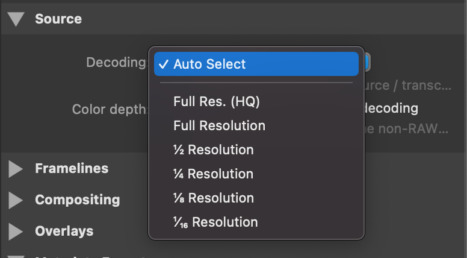
Selection of the preferred decoding resolution
Per default, Silverstack is configured to use the “Auto Select” mode, which automatically chooses the preferred decoding resolution for each transcoding task individually, based on the source resolution and the target resolution (e.g., source resolution 8k, target resolution 2k → automatically chooses “¼ res. decoding” – if supported for source format). Some non-RAW formats implicitly decrease color bit depth when using lower decoding resolutions. To prevent this behavior, the “Always use full color depth decoding” option automatically forces full resolution decoding in those situations.

“Auto Select” mode and full color depth option
It is possible to check the transcoding quality parameters that were actually used for each transcoding task in the “Task Details” section of the job view.
Compositing
- Resizing:
- Fitting Strategy:
- The zoom to fit (Adding black bars/Without black bars) option will adjust the horizontal resolution of the clip to fit in the selected final size.
- Zoom to fill will affect the vertical resolution of the footage to the final size, cropping the sides.
- 1 to 1 will zoom the footage to 100% in the center of the image to adjust to the final selected size, cropping everything else.
- Fitting Strategy:
- Grading:
- Look Source: Choose how to manage the color data for the clip:
- As set in Library: enable this setting to include the looks applied to the clip in the Library. For more information on how to apply looks, please check the article The Silverstack Look Library.
- None: Disables the color processing and transcodes the clips unmodified (as recorded).
- From file: Reads the clip metadata and applies the color processing described in the embedded looks. In case there is no look embedded, Silverstack applies the default Log to Rec.709 conversion for the specific format.
- Look Source: Choose how to manage the color data for the clip:
- Frame lines: You can enter a custom aspect ratio to apply it as frame lines to the transcoded clips. Additionally, choose from different appearances in the “Appearance” dropdown.
All entered aspect ratios will be saved in the dropdown and sorted in alphabetical order:
Comments to the aspect ratios can be added in brackets after the aspect ratio (see example “2,39:1 (Cinemascope)”).
The list of aspect ratios is shared between all three places in Silverstack Lab where aspect ratios can be set: In the transcoding configurations (as explained here), in Crop, and in the Visual Controls for framing assistance.
Overlays
- Burn Ins: Choose from different options to burn in metadata in the transcoded clip:
Note: The «Custom Text» burn in option (Silverstack Lab only) allows to add metadata wildcards into the custom text field. For instance, it’s possible to display «Scene: [scene value]-[shot value]» as shown in the following figure by writing «Scene: $scene$-$shot$» in the custom text field.
Find a list of all available keys in the article Custom Burn-In Wildcard Keys.
- Burn in Parameters: The following parameters can be adjusted for the burn ins:
- Margins: A horizontal and vertical margin to position the burn ins in the frame.
- Font: Sets the font style for the burn ins.
- Font Size: Sets the font size in pt.
- Transparency: Sets the transparency level for the burn ins.
- Text Color: Sets the text color to “White” or “Black”
- Background: Sets the background to a “Box” shape or adds an “Outline” to the text.
- Image Overlay: Choose an image overlay (.png, .jpg, .tiff) to be burned into the transcoded clips.
- Overlay parameters:
- Size: Sets the size of the image (0 -100 %)
- Position X: Sets the position in horizontal direction
- Position Y: Sets the position in vertical direction
- Transparency: Sets the transparence (0 – 100 %)
- Overlay parameters:
Metadata Export
Choose a target application to automatically export a metadata file to transfer detailed clip information to different 3rd party systems.
Choose from the following export tools and formats:
- Adobe Premiere Pro (.XML)
- AVID Media Composer (.ALE)
- Final Cut Pro 7 (.XML)
- Final Cut Pro X (.FCPXML)
- COPRA Dailies System (.XML)
- Pomfort XML Metadata (.XML)
Select the destination tool and click the “Configure…” button to define the detailed settings for the metadata file export. Click the links to the tools above to learn more about the configuration of the metadata exports.
The Transcoding Preview
When the transcoding tab in the right bar is showing Silverstack automatically switches to a transcoding preview to be shown in the playback view:
The transcoding preview displays a preview of the transcoding configurations applied to the currently selected clip.
Starting a Transcoding Job
In order to start transcoding the clips, first select a folder or bin in the Library panel. Then click on Transcode to open the wizard. There you will be able to select the clips you want to transcode. Click on continue to select the destination and transcode settings.
Now you are able to select where the transcoded clips will be stored. You can add and remove destinations by using the «+» and «-» buttons. Alternatively, it’s also possible to modify each destination path and path wildcards. You can select from the configurations previously configured in the transcoding configurations tab:
Click the current configuration to open the list of all available transcoding configurations:
When the checkbox “Add to Library” is checked the transcoded clips will automatically be ingested into the Silverstack Lab Library after the transcoding job is done. Transcoding statistics will be available for the clips in the statistics view.
Click “Start Render Job” to start the render job. It can then be traced in the jobs panel.
Path Wildcards for Transcode Destinations
Path Wildcards can be used to customize the transcoding path with available metadata. Click the “Path wildcard” icon in the status bar (see fig. 13) to access the path wildcards settings for the selected destination:
It is also possible to rename the transcoded clips by leaving out the “/” and optionally also adding a file extension. Here’s an example:
Hint: It is also possible to copy and paste path wildcards like plain text.
Multi Destination Transcoding
Silverstack Lab is able to transcode to multiple destination formats at a time. In certain cases (see below), the transcoding of the configurations has to be run sequentially. The transcoding wizard will give you a hint if the transcoding will be run in parallel or sequentially:
In case of sequential transcoding you can open the “Learn More” panel to get details about the transcoding order.
The following settings can influence the parallel execution of the transcoding job:
- In/Out Points
- Debayer settings
- Decoding resolution
Make sure to set the above settings to the same value when transcoding to two different configurations to avoid sequential transcoding.
Management of Transcoding and Offload Jobs
Silverstack Lab is generally able to transcode and copy at the same time. Transcoding jobs as well as copy jobs run in the background while the app is still fully accessible.
Optionally you can choose to pause transcoding jobs when offloading and while playing back clips. To do so go to the “Copy&Jobs” tab in the Preferences and select the according checkbox “Automatically Interrupt Transcoding Jobs during Playback and Offload”:
GPU Selection
In the preferences tab “Copy&Jobs” inside the “Transcoding” section you can select the preferred GPU for transcoding.
There are two options for the GPU selection:
- Auto: This setting is the default setting and uses the system default GPU.
- Manual: In this setting you can select the GPUs to be used from the available GPUs in the table (see screenshot above). If no GPU is selected or found, the usage falls back to the system default (like setting “Auto”)
eGPU Support
Silverstack Lab also supports eGPUs (external GPUs) that can be attached to the machine the application is running on. Properly attached and installed eGPUs will show in the table when choosing the “Manual” GPU selection.
To setup the eGPU follow these steps:
- Connect the eGPU while Silverstack isn’t active
- Select GPU selection “Manual” and the preferred GPUs in the preferences
- In case the eGPU isn’t used, please switch to internal GPU and back to eGPU in the preferences.
During an active transcode job you can check usage and workload of CPU and GPU via the OS X activity monitor. This helps to test your setup and current settings.
eGPUs can provide speed advantages for formats that require a lot of GPU work. Please be aware that while some transcoding tasks could be faster using an eGPU, other tasks/formats could suffer in speed. This heavily depends on source formats and transcoding configurations.
Transcoding Functionalities Overview for Silverstack Lab
- Multi Destination Transcoding
- Many custom transcoding preset
- All available burn in options
- Watermarking
- Transcoding resolutions higher than Full HD (1920 x 1080)
- Transcoding statistics
- Separate audio channels in transcoded clip
- Transcoding to DNx codecs (MXF, OP-Atom)
- Use of multiple GPUs for transcoding
- Frame lines burn-in for transcoded clips
- Automatic metadata companion file export
*Only available for ProRes and H.264
** Not available for AAC audio codecs
Keywords: dnx36, transcoding, dnx, AAF
Search Code: SL-T17


